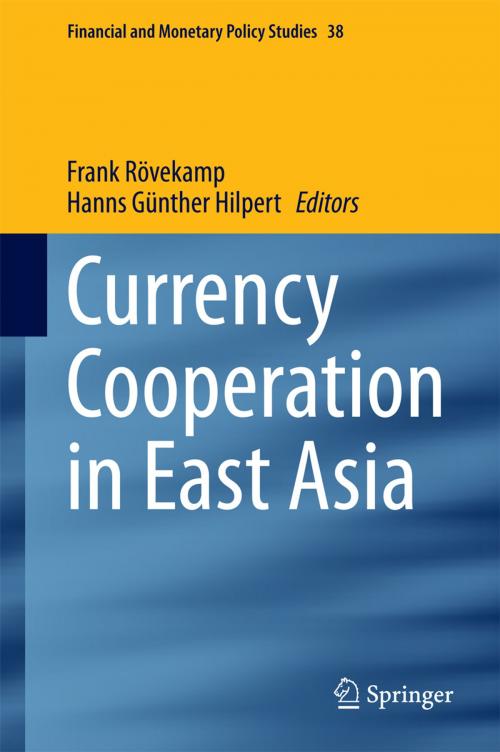Currency Cooperation in East Asia
Business & Finance, Economics, Macroeconomics, Nonfiction, Social & Cultural Studies, Political Science, Politics, Economic Policy| Author: | ISBN: | 9783319030623 | |
| Publisher: | Springer International Publishing | Publication: | July 8, 2014 |
| Imprint: | Springer | Language: | English |
| Author: | |
| ISBN: | 9783319030623 |
| Publisher: | Springer International Publishing |
| Publication: | July 8, 2014 |
| Imprint: | Springer |
| Language: | English |
This book explores the opportunities and limits of currency cooperation in East Asia. Currency issues play an important role in the region. The Asian crisis of the late 90s was rooted in deficient currency arrangements. The Chinese RMB is not freely convertible yet, but policymakers in China nevertheless aim for a more international role of the Chinese currency. The recent change of direction in Japanese monetary policy caused a drastic depreciation of the Yen and led to warnings against a possible “currency war”, thus demonstrating that currency issues can also easily lead to political frictions. Most trade in and with the East Asian zone on the other hand is still conducted in US $. Against this background different modes of currency cooperation serve the goal of smoothing exchange rate fluctuations and capital flows. They are an important element to promote financial stability and to reduce the transaction cost for foreign trade or investment. The contributions of this book analyze the environment and design of currency cooperation in East Asia and their effects from a macro-and microeconomic viewpoint.
This book explores the opportunities and limits of currency cooperation in East Asia. Currency issues play an important role in the region. The Asian crisis of the late 90s was rooted in deficient currency arrangements. The Chinese RMB is not freely convertible yet, but policymakers in China nevertheless aim for a more international role of the Chinese currency. The recent change of direction in Japanese monetary policy caused a drastic depreciation of the Yen and led to warnings against a possible “currency war”, thus demonstrating that currency issues can also easily lead to political frictions. Most trade in and with the East Asian zone on the other hand is still conducted in US $. Against this background different modes of currency cooperation serve the goal of smoothing exchange rate fluctuations and capital flows. They are an important element to promote financial stability and to reduce the transaction cost for foreign trade or investment. The contributions of this book analyze the environment and design of currency cooperation in East Asia and their effects from a macro-and microeconomic viewpoint.















